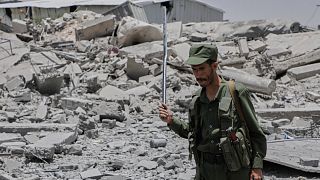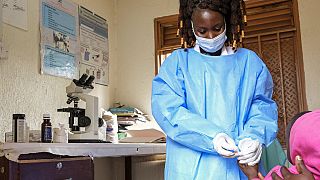Central African Republic
In remote parts of the Central African Republic, community workers deliver HIV/AIDS drugs to patients.
Communities in the south-eastern region of Zemio, struggle to have access to government’s services or supplies due to years of conflict.
“There is poverty here, there is starvation here. Women have had to resort to sex to scrape together 0.17 cents for their survival”, Bienvenu, a nurse at the Zemio hospital said.
Marina has been living with HIV since 2010. Two years ago, she left the country after fighting broke out in her home area. She returned to Zemio, a couple of months ago despite the insecurity to access treatment
“Before I was strong and healthy with the treatment. Due to the violence, I had to flee to DRC. We did not have anything to eat, it was very hard. I could not take my pills, that’s when I got sick again…the viral load became very high”, she said.
The initiative was set up in 2016 by medical charity, Medecins Sans Frontieres to bring together people living with HIV who can support each other.
“The nurses came to check my viral load…I am now undetectable”, Fiacre, a community ARV group member said.
The United Nations has said, about 470,000 people living with HIV in Africa still die every year because they cannot or do not get tested and gain access to treatment. This accounts for more than 60 percent of all global HIV-related deaths.
Reuters











01:46
Ethiopia: HIV infections soar in post-war Tigray
Go to video
UNAIDS urges action to prevent HIV crisis globally
05:00
Breaking stigma, building hope: Gloria Nawanyaga’s fight for inclusion and empowerment
Go to video
Colombian man arrested for hiding cocaine under toupee at Cartagena airport
11:40
South Africa's HIV patients fear losing life-saving treatment due to aid freeze
Go to video
This is what happens to the body when HIV drugs are stopped for millions of people